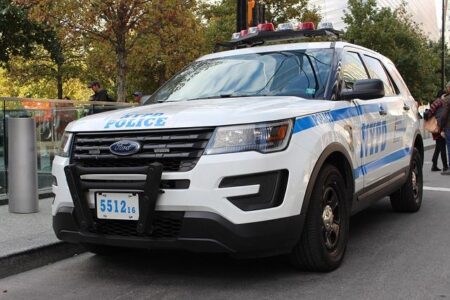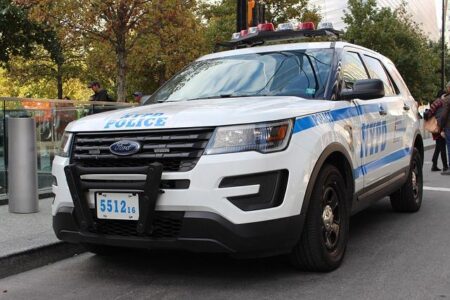The number of officers in New York City’s School Safety Force has dropped by nearly one-third over the past few years, raising concerns about the impact on student security and school environment. As enrollment in public schools remains steady, education officials and city leaders are grappling with how to address the significant reduction in personnel tasked with maintaining safety on school grounds. This decline comes amid ongoing debates about the role of law enforcement in schools and efforts to balance safety with a supportive learning atmosphere.
NYC School Safety Force Sees Significant Decline Amid Rising Concerns
The number of personnel within the NYC School Safety Force has dwindled by nearly 30%, raising alarms among educators, parents, and city officials. This steep decline comes at a time when schools are grappling with increasing incidents ranging from basic disorderly conduct to more serious safety threats. Critics argue that the reduction in staffing undermines the ability to maintain a secure learning environment, potentially impacting student well-being and overall school climate. Efforts to recruit and retain safety officers have faced numerous challenges, including budget constraints and tough working conditions.
Key concerns related to the decline include:
- Delayed response times to incidents on campus
- Increased pressure on existing staff and administrators
- Difficulty in enforcing school discipline effectively
- Rising anxiety among students and parents about safety levels
Recent data highlights the impact: schools with fewer safety officers report a 15% increase in disruptive incidents. The NYC Department of Education is currently reviewing policies and budget allocations to address the shortfall and restore trust in the system.
| Year | School Safety Officers | Reported Incidents |
|---|---|---|
| 2021 | 4,500 | 3,200 |
| 2022 | 3,300 | 3,700 |
| 2023 | 3,150 | 3,680 |
Impact of Reduced Safety Personnel on Student and Staff Security
The decline in the number of school safety officers across New York City has sparked growing concern among educators and parents alike. With fewer personnel available to monitor hallways, entrances, and playgrounds, the risk of security breaches and unaddressed conflicts escalates. Schools are reporting longer response times to incidents, raising anxiety about the immediate protection of students and staff. This reduction undermines the once robust presence of safety forces, critical in deterring violence and ensuring a calm learning environment.
Stakeholders emphasize that maintaining a secure atmosphere goes beyond physical presence; it involves rapid intervention, conflict de-escalation, and a reassuring adult presence. The effects of these staffing cuts are multifaceted:
- Increased vulnerability during peak transition times between classes.
- Reduction in proactive engagement that safety officers traditionally provide to prevent issues before they escalate.
- Heightened stress for teachers and administrators who now shoulder extra supervisory responsibilities.
| School Size | Safety Officers Previously | Safety Officers Now | Change (%) |
|---|---|---|---|
| Small (≤500 students) | 6 | 4 | -33% |
| Medium (501-1000 students) | 10 | 7 | -30% |
| Large (>1000 students) | 18 | 12 | -33% |
Challenges Faced by the School Safety Force in Recruitment and Retention
The NYC School Safety Force has encountered significant obstacles in maintaining its staffing levels amid a wave of resignations and slowing recruitment. Low pay scales compared to other law enforcement agencies have made it difficult to attract new candidates, especially given the demanding nature of the job. Additionally, the role’s high-stress environment, compounded by increasing incidents of school violence, deters prospective recruits from pursuing this career path.
Retention challenges are equally pressing, with many current officers citing burnout and limited career advancement opportunities as primary reasons for leaving. The volatile climate in many schools, coupled with insufficient support and training resources, exacerbates feelings of job dissatisfaction. Key factors contributing to these challenges include:
- Competitive salaries in private security and neighboring agencies
- Increased exposure to confrontations and conflicts
- Lack of comprehensive mental health support programs
- Minimal formal pathways for promotions and professional growth
| Challenge | Impact on Force | Potential Solutions |
|---|---|---|
| Low Compensation | Reduced applicant pool | Salary adjustments, bonuses |
| High Stress Levels | Increased resignations | Enhanced wellness programs |
| Limited Growth | Lower morale, turnover | Professional development tracks |
Proposed Strategies to Reinforce School Safety and Support Officers
To address the steep decline in the NYC School Safety Force, experts and officials have proposed a multi-pronged approach that prioritizes both recruitment and retention. Among the key measures are enhanced recruitment campaigns targeting local communities to attract candidates who understand the unique challenges of the school environment. Additionally, improving working conditions through competitive salaries, comprehensive benefits, and mental health support are seen as critical to keeping officers motivated and engaged.
Complementing recruitment and retention efforts, the following strategies are being recommended to strengthen on-the-ground safety:
- Implementing advanced technology solutions for real-time communication and incident tracking
- Regular training programs focusing on de-escalation tactics and cultural sensitivity
- Community partnership initiatives to foster trust and collaboration between officers, students, and parents
- Data-driven deployment to allocate resources more efficiently based on school-specific needs
| Strategy | Expected Impact | Timeline |
|---|---|---|
| Focused Recruitment Campaigns | Increase new hires by 20% | 6-12 months |
| Enhanced Officer Training | Reduce student-related incidents by 15% | Ongoing |
| Technology Upgrades | Improve response times by 25% | 12 months |
Final Thoughts
The significant decrease in the NYC School Safety Force raises urgent questions about the city’s ability to maintain secure learning environments amid ongoing challenges. As officials and community members grapple with the implications, attention now turns to how policymakers will address staffing shortages while ensuring the safety of students and educators in the nation’s largest public school system. The evolving landscape of school safety in New York City remains a critical issue to watch in the months ahead.













